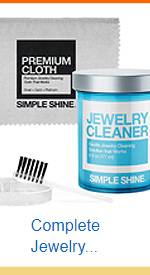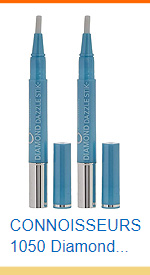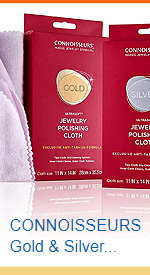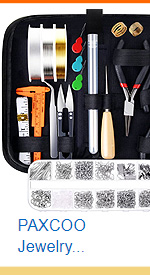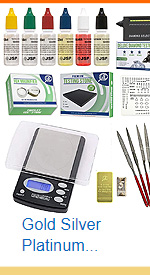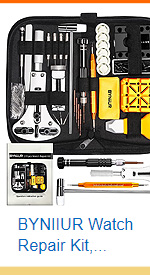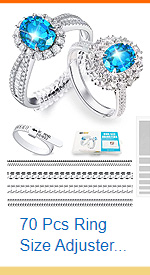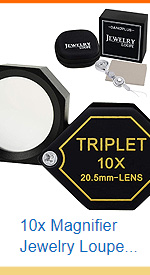WHY CERTIFY I CLARITY DIAMONDS?
DOES CERTIFYING LOW QUALITY MAKE THEM SOUND BETTER?
This post contains affiliate links. If you use these links to buy something I may earn a commission. Thanks! As an Amazon Associate I also earn from qualifying purchases.
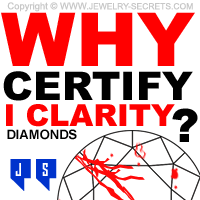
Picture this:
You walk into a jewelry store…
You’re looking at a pair of one carat diamond stud earrings (like these earrings here).
The salesperson says “These are great diamond studs.” She smiles…
“They’re certified!”
You look at the certificate.
The clarity is I clarity.
I don’t get it. It makes no sense to me…
I clarity is the lowest clarity range there is on the market…
So why certify them?
I could see if it was a higher clarity, like VS clarity (like these VS clarity diamond studs here). A VS diamond should be certified. That’s a clarity that you would want to be guaranteed. But an I clarity?
WHY?
You want to know the real truth?
They certify them to make them sound better.
People hear the word “certified” and instantly think “good“.
For some people that’s all the news they’ll need to believe that they’re getting a good diamond and a good deal.
But, trust me, just because it’s certified…
Doesn’t mean it’s good.
Jewelers are certifying low clarity diamonds to paint the illusion that the diamonds are better (especially with I2 and I3 clarity stones). They sugar coat them.
Slap some paperwork with them, give them the title of “certified” and viola! The diamond sounds better and sells better. Plus, I have a sneaky feeling that they’ll probably charge more for these certified stones too.
And that’s because they’re certified.
They don’t need any more reason than that.
But certified doesn’t mean squat.
What matters the most is the actual clarity and color.
I clarity is not the best clarity.
With I clarity (imperfect clarity), you will be able to see flaws and inclusions with the bare eye. Just by looking at the diamond you’ll see: cloudy areas, black spots in the stone (looks like pepper), lines, cracks, chips and flaws.
So don’t let a certificate fool you. Look at the diamond. Scope it under a microscope or a 10x jeweler’s loupe.
Stores are grading low quality diamonds and you’re thinking you did good…
WRONG!
Study the 4C’s.
Learn the 4C’s.
Find out what the color and clarity means. Magnify the diamonds. You’ll see. They are low grade for a reason.
It’s pretty funny if you think about it. “I promise these diamonds are in the lowest clarity range you can get.” lol
This is what I promise: You’ll see large, ugly, flaws in the stones.
Don’t fall for it.
Unless you really want to buy the cheapest clarity range on the market???
If you see a certified stone… Look closer.
Is it yellow in color? Brown? Dark?
Look at the clarity. Is it hazy? Foggy? Do you see black specks? Inclusions in the stone?
Does it look like the diamond is cracked? Chipped?
Does the diamond lack life, brilliance and sparkle?
These are all common traits of an I clarity diamond. So you see, you must study the stone.
Anybody can certify any color and any clarity. Even the lowest diamond grade (I3 clarity).
Once upon a time, only high clarity diamonds were certified. Customers wanted the assurance and guarantee that they were buying high clarity. Like a 3/4 carat diamond, SI1 clarity, G color. I would want to make sure it’s that quality.
But now you get .20 carat diamonds, I2 clarity, J color being certified.
That’s a joke.
So be careful.
You should be more concerned with the 4C’s: cut, color, clarity and carat weight.
Granted, there’s nothing wrong with buying low clarity diamonds. Most diamond earrings sold on the market are I clarity… That’s fine. But they don’t need to be certified to make them “sound” better.
If you know they are I clarity and are fine with that, then it’s all good. You get what you pay for. But don’t be mislead to believe that they’re better or great just because they come with impressive, laminated paperwork.
Confusion:
Personally, I wish they wouldn’t certify lower grades of diamonds anymore. I think it only confuses people and gives certified diamonds a bad name.
There’s no purpose for it.
Color and clarity are what matters the most. Not certification.
Don’t be suckered…
Watch the quality.
Not the cert.
Cheers! :)




